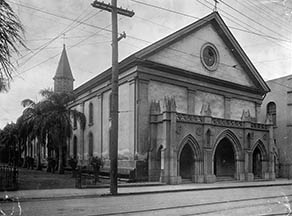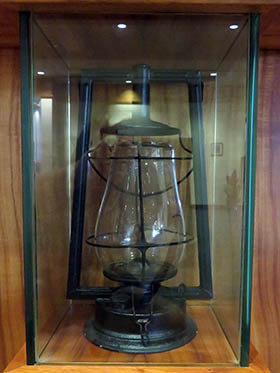 |
 |
 |
 |
||||||
|
|
|
|
|
|
|
|
|
|
 |
|
 |
|||||||
 |
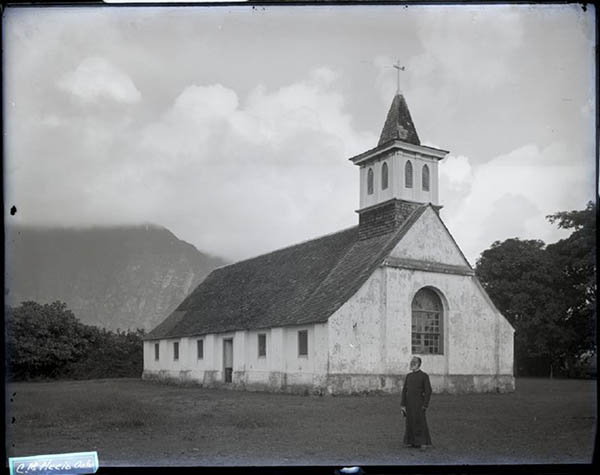
“The first Catholic missionaries to the islands were from the Congregation of the Sacred Hearts of Jesus and Mary”, explains Father Gomes. “I have been a professed member since 1975.” The order was founded in France right after the French Revolution in the year 1800, dedicated to the honor and respect of the hearts of Jesus and Mary. Our purpose is to make the love of God visible. Our founder, Fr. Pierre Coudrin, envisioned a group of men and women wearing white—our habit is a white habit—going to the far reaches of the world to spread the gospel message. 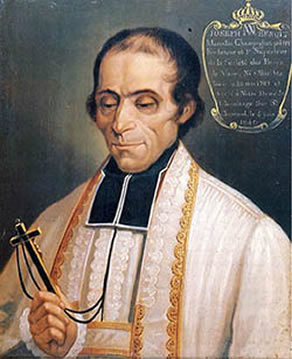
“We were given permission by Rome to be an official papal congregation in 1817. The first mission given to us by the Pope were the Islands of the North Pacific Ocean. The Marianist Fathers and Brothers, who are our contemporaries from France were given the Islands of the South Pacific Ocean. So you see a lot of Marianist and Marist priests and brothers in the South Pacific Islands. The Sacred Hearts fathers and brothers arrived in the Hawaiian Islands in 1827, again for the sake of spreading the gospel of Jesus Christ. “We were followed by the Sacred Heart sisters—same congregation, two different branches, male and female. The sisters came in 1859 and immediately started schools in the Hawaiian Islands for the education of young women. “The original Catholic missionaries arrived in 1827, but they were predated by the Protestant missionaries who came in 1820. The protestant missionaries were successful in getting the monarchy baptized into their denomination. The Catholic missionaries were met with apprehension and suspicion when they arrived seven years later. They were labeled “papists”, the connotation was that they were not really worshiping Jesus Christ but loyal to a man in Rome called the Pope." “In the 1830s, the Catholics were persecuted in the downtown Honolulu area. The Cathedral of Our Lady of Peace had been established—the building not yet built until about 1843. Because the Congregationalists had aligned themselves to the monarchy, the monarchy—and especially Queen Ka‘ahumanu and Princess Kīna‘u—were very much opposed to Catholic worship. So by the decree of King Kamehameha III, prompted by those two, Catholics were not able to worship. They had probably been coaxed and influenced greatly by the Protestant missionaries. “And so Catholic priests were exiled from Hawai‘i from 1832 to 1839. A number of them left the downtown area and came to the Windward side, including a priest who sat on the land of He‘eia in the 1830s. The reason the Catholic priests were allowed back in the Islands was because they were French citizens, and the French captain of the boat that brought them back said that he would declare war on the Hawaiian Islands if the French citizens, who happened to be Catholic priests, were not allowed to set foot on land. 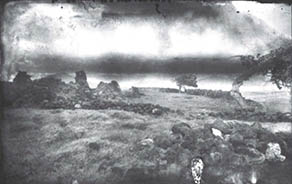
“After the exile of Catholics and the priests in the 1830s, the community of St. Ann was actually started. The first Baptism at St. Ann is recorded in September of 1841. And at that time, there was a grass shack that served for a meeting place and a place of worship for the people. By the early 1850’s, the number of Catholics had increased, so there were plans to build a coral stone church, which they successfully completed in 1852. "The coral was hewn from Kāne‘ohe Bay, brought to shore, and the church was built. The structure stood for 103 years until the “temporary” church was built in 1955. This structure lasted for 45 years. Plans then were made for our current building which was completed and dedicated in 2001. The building itself is only 16 years old. It is in the same area as the two previous churches” “We helped to build St. Ann’s church that’s just made 175 years old,” Rocky says. “It was stemmed from St. Catherine’s church that was on Mōkapu. The tidal wave came and took St. Catherine’s down. Our people went across and brought a lot of the coral from St. Catherine’s church across the peninsula and built St. Ann’s church. The first church was made of coral from St. Catherine’s church in Mōkapu.” “The acquisition of the property is an interesting story,” Father Gomes continues, “but there is very little documentation that’s handed on to us. It seems that in the 1830’s, the chief of the Windward side—his name was Abner Pākī—was looking for kerosene for his lamp. He went to the Protestant minister whose name was Benjamin Parker. Unfortunately, Benjamin Parker did not have kerosene to give, and so he came to the priest who was on this property and asked for kerosene. “The priest was willing to give him as much as he wanted. A few weeks later, the ali‘i of the Windward side came and gave him a deed to five acres of land here, which eventually was squared off and became 6 acres of land, so we’ve been on this site since 1841. We have a symbolic lantern in the church and a plaque that talks about the acquisition of the land from Chief Pākī. There’s a poi pounder that was found on the property, some old missal books that were used for mass in the 1800s, and in the next cabinet there’s a lantern. Again, it’s a symbolic lantern, it’s obviously not the original lantern that was used. “We still have six acres. We there was a parcel that we bought, and so we squared it off. It’s not a perfect rectangle. When property lines were drawn, we bought properties so that it would be a consistent six-acre property. We’re surrounded by a subdivision called Crown Terrace that came about in the 1960s.” Read about the little cemetery behind Windward Mall 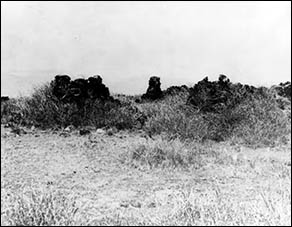
“The coral block church lasted for a few years after the 1955 church was built, but then the pastor at that time had the church dismantled. The coral blocks were used as parking barriers and other things on the site, and then later on used to fill the cesspools on the property. The church blocks, the coral blocks, have tremendous function because there are no sink holes on the property at this point. “This is the oldest Catholic Church on this side of the island. The oldest church is the Our Lady of Peace Cathedral Basilica and we marked that by the first baptism there in 1827 when the missionaries first arrived. The second oldest Catholic Church is St. Ann, 1841. “We started in 1841 and the Catholic population started to increase from that point on. That was an ebb and flow of course. Sometimes, the population of Catholics would plateau, and then sometimes it experienced great growth. There was a school attached almost from the beginning of the parish for the education of the children. It was valued by the people that lived in this area because it taught English. And of course, because of the influence of the businessmen who were from the United States, English was a sought-after language to learn. 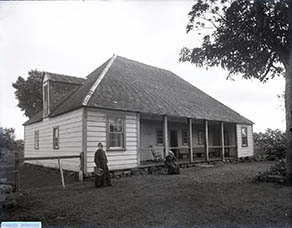
“I think from the beginning, and I’m not sure about this, but I think the services were conducted in English, even though they were French missionaries. I think that from our earliest records, from what we can see is the English language was used. Not sure about how the French men learned English.”
“The McCabes helped start St. Ann’s Church," Lilikala adds. "Rocky comes from the McCabes. It’s still a very popular church today, lots of Catholics in this area.”
Read about the legacy of music in both churches.
|
 |
|
 |
Around the same time that the Catholic missionaries were getting established in He‘eia, great changes were in the works as King Kamehameha III set about dividing the land. Now we turn to the effects of the Māhele on He‘eia.
|
 |
||
 |
|
 |
||

|
 |
||||
|
||||
Copyright 2019 Pacific Worlds & Associates • Usage Policy • Webmaster |
||||
